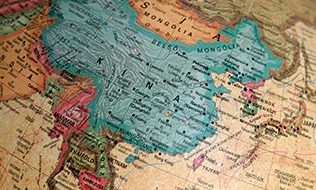

The recent summit in Singapore between U.S. President Donald Trump and North Korean ruler Kim Jong Un has raised mixed reactions from the investment world.
“No doubt, you’ve heard the criticisms of the outcome [of the summit], that the agreements signed by President Trump and Kim Jong Un are too vague, that no new commitments came from North Korea,” said Andrew Rothman, an investment strategist at Matthews Asia, in a recent online presentation on the investment implications of the summit. He’s more optimistic about the meeting, however, and said investors should focus on what it demonstrates has changed in the Korean situation when it comes to investing in Asia.
There’s a significantly reduced risk of military conflict between North Korea and the United States in the wake of the summit, said Michael Oh, a portfolio manager at Matthews Asia, during the recent online presentation. Investors looking to Asia through a long-term lens should view that as an important and positive outcome of the meeting of the two leaders, he said. “I think it’s very easy to forget just how serious the risk of conflict was just a few months ago, before this summit,” he said.
Read: New report tracks Canadian pension funds’ rising interest in Asia-Pacific
Indeed, just a few months ago, people in South Korea laughed at Ian Beattie, co-chief investment officer of NS Partners Ltd., when he raised the idea of looking at some of the changes the region might experience in the future. “They just thought it was a nonsense idea and a waste of time. It’s one of those situations where all of the experts have been . . . proved wrong,” he says.
“If we do get a rapprochement, if there’s a big deal here, a grand bargain, then it’s a very big positive from a geopolitical risk point of view. It immediately brings down your cost of capital in the long run and makes it a much more attractive investment opportunity on the peninsula.”
To contextualize the developments, nothing close to an open market existed in North Korea as recently as 2005, said Rothman. But basic entrepreneurial activity is beginning to emerge, he noted.
“I think that Kim Jung Un, unlike his father, seems to understand that if he doesn’t take additional steps to improve standards of living, which have to be driven by markets, this is going to be a much bigger threat to the survival of his regime than anything the U.S. might do to him,” said Rothman.
Read: Ontario Teachers’ appoints new Asia-Pacific regional investment head
In order to achieve those improved standards, Kim needs to get the United States to lift some of its economic sanctions on North Korea, work more closely with South Korea and China to get their help in improving infrastructure and manufacturing and create export-related jobs, Rothman noted.
From an investment perspective, North Korea still represents something of an unknown, says Esther Baroudy, managing director at State Street Global Advisors. “They don’t really have GDP numbers, they don’t have a national statistics agency. What they think is that the GDP per capita is about $1,700 a year, which is very poor. So they’re going to need a lot of help. Most of that will come from South Korea and China.”
The closer economic ties that North and South Korea could begin to form will be important for investors to watch, said Oh. With eased trade between the two countries, North Korean citizens could represent a new consumer base for many Asian companies, he said.
“Operations between North and South Korea can potentially benefit the entire region,” he noted.
Read: What’s the outlook for key Asian economies?
Baroudy, however, suggests that while that could represent an investment opportunity for the region, it isn’t an especially large one. “It will start very slowly . . . given that they’re coming from a very low base, where most things have been directed towards the military. I imagine construction will do quite well to begin with. And then other things would come,” she says.
“But people need to be sure that they are going to abide by their promises and denuclearize and stick to their agreements going forward. But we don’t know what they’re thinking. It’s not easy to know. So I think that’s why people’s expectations are not very high, but I think people are relieved after the summit.”
To understand the type of investment opportunity North Korea could represent, it’s important remember just how poor its citizens are. “I would be counting on them more as a labour force than as consumers,” says Beattie, noting the country’s low-cost labour market.
Read: Japan a hotbed of ESG activity
“Whether your best investment would be through some South Korean companies or whether it would be through Chinese companies is the question. Probably both,” he adds.
As well, stocks in South Korea have faced what Oh called the “Korea discount” due to the national security issues North Korea poses. “In my opinion, the fundamentals of Korean companies remain quite strong, and we believe that the market could be a very attractive market for long-term investors, especially with this risk now receding.”
Indeed, Samsung Securities Co. Ltd. set up an internal North Korean investment strategy research team just prior to the summit. Describing the move as an industry first in a news release, Samsung Securities suggested its ability to work with firms from other Asian nations would allow it to broadly and accurately assess North Korea’s economic situation. The firm noted that while the geopolitical developments in North Korea are nascent, it anticipates they’ll bring long-term benefits for South Korean companies.
Read: Will Italy’s political turmoil dampen institutional investor interest?
